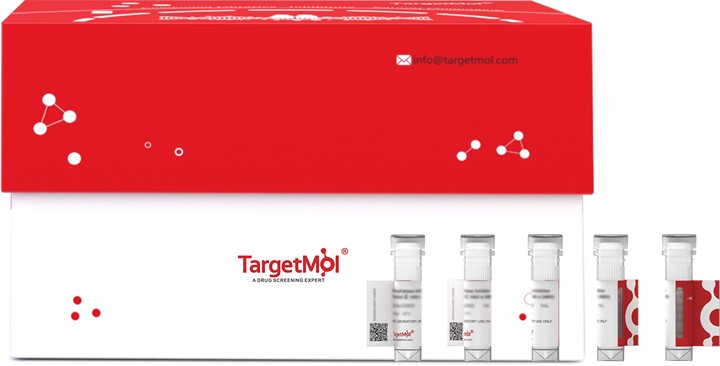Shopping Cart
- Remove All
 Your shopping cart is currently empty
Your shopping cart is currently empty

RIPK3 Protein, Human, Recombinant (His) is expressed in yeast with N-6xHis tag. The predicted molecular weight is 58.9 kDa and the accession number is Q9Y572.

| Pack Size | Price | Availability | Quantity |
|---|---|---|---|
| 20 μg | $231 | 20 days | |
| 100 μg | $480 | 20 days | |
| 500 μg | $1,330 | 20 days |
| Biological Activity | Activity has not been tested. It is theoretically active, but we cannot guarantee it. If you require protein activity, we recommend choosing the eukaryotic expression version first. |
| Description | RIPK3 Protein, Human, Recombinant (His) is expressed in yeast with N-6xHis tag. The predicted molecular weight is 58.9 kDa and the accession number is Q9Y572. |
| Species | Human |
| Expression System | P. pastoris (Yeast) |
| Tag | N-6xHis |
| Accession Number | Q9Y572 |
| Synonyms | RIP-like protein kinase 3,RIPK3,Receptor-interacting serine/threonine-protein kinase 3,Receptor-interacting protein 3 |
| Amino Acid | MSCVKLWPSGAPAPLVSIEELENQELVGKGGFGTVFRAQHRKWGYDVAVKIVNSKAISREVKAMASLDNEFVLRLEGVIEKVNWDQDPKPALVTKFMENGSLSGLLQSQCPRPWPLLCRLLKEVVLGMFYLHDQNPVLLHRDLKPSNVLLDPELHVKLADFGLSTFQGGSQSGTGSGEPGGTLGYLAPELFVNVNRKASTASDVYSFGILMWAVLAGREVELPTEPSLVYEAVCNRQNRPSLAELPQAGPETPGLEGLKELMQLCWSSEPKDRPSFQECLPKTDEVFQMVENNMNAAVSTVKDFLSQLRSSNRRFSIPESGQGGTEMDGFRRTIENQHSRNDVMVSEWLNKLNLEEPPSSVPKKCPSLTKRSRAQEEQVPQAWTAGTSSDSMAQPPQTPETSTFRNQMPSPTSTGTPSPGPRGNQGAERQGMNWSCRTPEPNPVTGRPLVNIYNCSGVQVGDNNYLTMQQTTALPTWGLAPSGKGRGLQHPPPVGSQEGPKDPEAWSRPQGWYNHSGK |
| Construction | 1-518 aa |
| Protein Purity | > 90% as determined by SDS-PAGE. |
| Molecular Weight | 58.9 kDa (predicted) |
| Endotoxin | < 1.0 EU/μg of the protein as determined by the LAL method. |
| Formulation | Tris-based buffer, 50% glycerol |
| Reconstitution | A Certificate of Analysis (CoA) containing reconstitution instructions is included with the products. Please refer to the CoA for detailed information. |
| Stability & Storage | Lyophilized powders can be stably stored for over 12 months, while liquid products can be stored for 6-12 months at -80°C. For reconstituted protein solutions, the solution can be stored at -20°C to -80°C for at least 3 months. Please avoid multiple freeze-thaw cycles and store products in aliquots. |
| Shipping | In general, Lyophilized powders are shipping with blue ice. Solutions are shipping with dry ice. |
| Research Background | Serine/threonine-protein kinase that activates necroptosis and apoptosis, two parallel forms of cell death. Necroptosis, a programmed cell death process in response to death-inducing TNF-alpha family members, is triggered by RIPK3 following activation by ZBP1. Activated RIPK3 forms a necrosis-inducing complex and mediates phosphorylation of MLKL, promoting MLKL localization to the plasma membrane and execution of programmed necrosis characterized by calcium influx and plasma membrane damage. In addition to TNF-induced necroptosis, necroptosis can also take place in the nucleus in response to orthomyxoviruses infection: following ZBP1 activation, which senses double-stranded Z-RNA structures, nuclear RIPK3 catalyzes phosphorylation and activation of MLKL, promoting disruption of the nuclear envelope and leakage of cellular DNA into the cytosol. Also regulates apoptosis: apoptosis depends on RIPK1, FADD and CASP8, and is independent of MLKL and RIPK3 kinase activity. Phosphorylates RIPK1: RIPK1 and RIPK3 undergo reciprocal auto- and trans-phosphorylation. In some cell types, also able to restrict viral replication by promoting cell death-independent responses. In response to Zika virus infection in neurons, promotes a cell death-independent pathway that restricts viral replication: together with ZBP1, promotes a death-independent transcriptional program that modifies the cellular metabolism via up-regulation expression of the enzyme ACOD1/IRG1 and production of the metabolite itaconate. Itaconate inhibits the activity of succinate dehydrogenase, generating a metabolic state in neurons that suppresses replication of viral genomes. RIPK3 binds to and enhances the activity of three metabolic enzymes: GLUL, GLUD1, and PYGL. These metabolic enzymes may eventually stimulate the tricarboxylic acid cycle and oxidative phosphorylation, which could result in enhanced ROS production.; (Microbial infection) In case of herpes simplex virus 1/HHV-1 infection, forms heteromeric amyloid structures with HHV-1 protein RIR1/ICP6 which may inhibit RIPK3-mediated necroptosis, thereby preventing host cell death pathway and allowing viral evasion. |

Copyright © 2015-2025 TargetMol Chemicals Inc. All Rights Reserved.